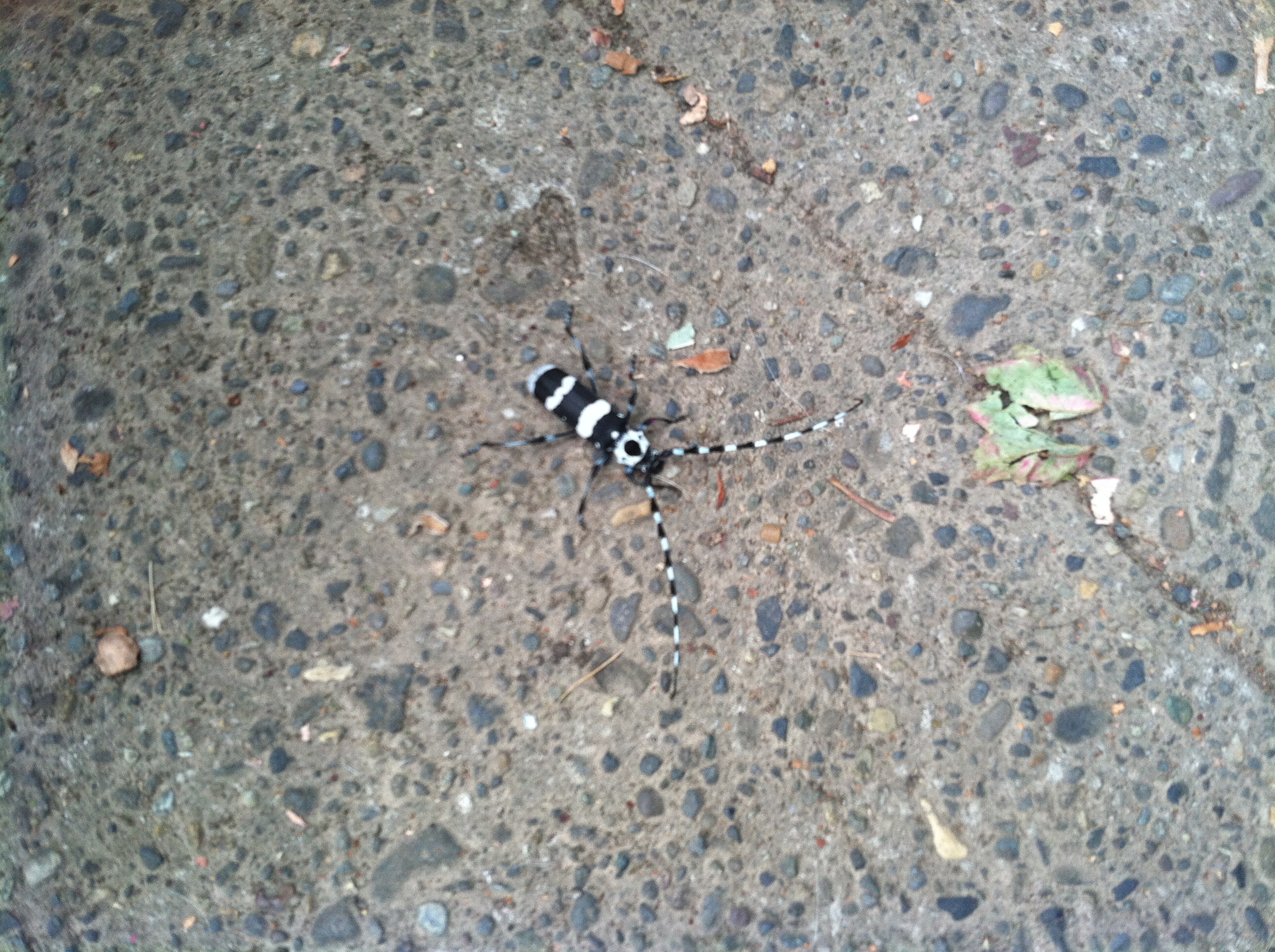Banded Alder Borer (Rosalia funebris) on Aug 16, 2013
Originally reported as Asian Longhorned Beetle (Anoplophora glabripennis)
Submitter does not have a specimen
Description of specimen
I will attach a picture. It is black and white and has long antenna. A woman on the board of some sort of forestry service (I forget the name of the organization) was walking by my home in June and pointed out the beetle and took it with her--we were hoping that was the only one. Then, 3 days ago I saw one laying on the sidewalk near the maple tree and took a picture. After doing some research on the internet I learned what to look for and when I examined my maple tree I was dismayed to find that the bugs have done considerable damage. The are numerous pencil size holes, some scarring, and sap flow. Unfortunately none of us know anything about bugs, but we were alerted that this beetle is a bad one. Please call or come by as soon as possible because I think the tree is in trouble and from what I read online, all of the trees in our area could be in trouble!



Reporter
Aug. 16, 2013, 10:58 a.m.
Thank you for your report and apologies for the wait in our response. We're currently looking for an entomology contact to review insect reports. However, I took a look at your photo and I believe this is a Banded Alder Borer (BAB), which is a species native to our region and an Asian Long-horned Beetle (ALB) look-alike.
Here is a website that compares the ALB to other beetles and how to tell the difference:
http://www.uvm.edu/albeetle/identification/
And here is a guide to the Banded Alder Borer:
http://entomology.oregonstate.edu/system/files/u1473/Banded_Alder_Borer.pdf
The main way to ID the BAB vs. the ALB is the BAB has regular white banding, and the segment closest to the head is white with a black central spot. The ALB has irregular white spots and the segment closest to the head is all black.
Banded alder borers tend to feed only on dead or dying trees, so it's possible your maple tree has been weakened by another agent (age, disease, drought?). If you're interested in learning more, you can contact the Oregon State University Extension Service at http://extension.oregonstate.edu/ or 541-737-2713.
Thank you again for taking the time to report your sighting!
Lindsey Wise
Biodiversity Data Manager and iMapInvasives Data Administrator
Institute for Natural Resources
Portland State University
Thank you for being vigilant in reporting your sighting, and take it as good news that this turned out to be a native species! The ALB is a serious pest in some parts of the US and we certainly want to prevent any outbreaks here in Oregon.
Lindsey Wise
Aug. 23, 2013, 7:20 a.m.